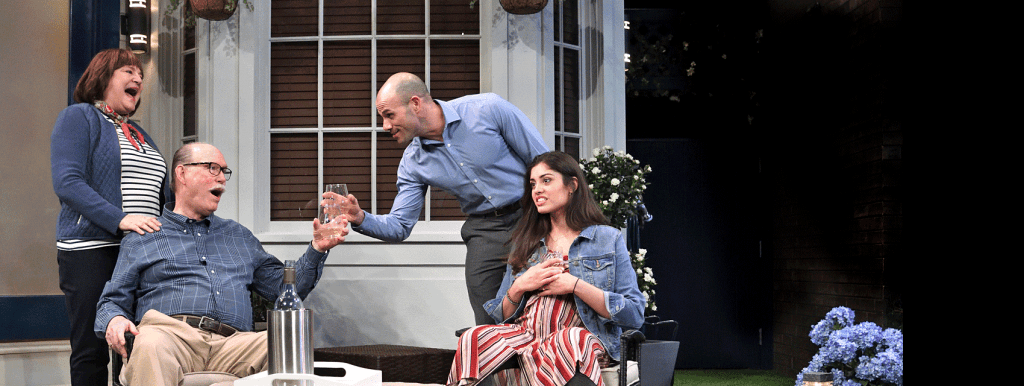For a play about an online advice columnist, Trinity Rep’s staging choice for Tiny Beautiful Things may seem a bit surprising at first glance: Why set the show in an old-school American 20th-century post office when the letters advice columnist Sugar receives are all virtual? But for set designer Baron E. Pugh and director Curt Columbus, the scenery choice is the perfect fit for the story they want to tell.
Cheryl Strayed, the real-life “Sugar,” posted the “Dear Sugar” column on the website The Rumpus, and those asking for advice sent their questions through emails. But it can be challenging to visualize that sort of digital communication on stage, so in the inaugural production of Tiny Beautiful Things at the Public Theater in New York City, Sugar gave advice from the inside of her home, which letter writers entered throughout the story.
When Curt and Baron first discussed Tiny Beautiful Things’ set design, they knew that they wanted to go in a different direction than what was in the script. They wanted to reflect how Sugar’s column was a meeting place for her and the letter writers, and emphasize the ritual of being in-person again after nearly two years of isolation.
“In this world we are currently living in where everything is very digital, especially coming out of the pandemic, there is sort of this lost art form that is writing actual, physical letters,” Baron said. “Because of that, and just how the show is positioned, we decided to put in a post office.”
When designing the set, Baron took inspiration from historic post offices in Providence and Pawtucket, as well as those in Washington D.C. He said older post offices had a ruggedness that he felt would add to the show’s staging. Details such as marble, grand windows, columns, and high ceilings are some of the concepts that Baron brought into the set design from his research. By making the set appear vintage, the show would have a more timeless feeling, and would invite audiences into a public space in a way Zoom boxes and emails can’t.
Baron began the design process in the summer of 2021, and between then and the final blueprints, the scenic design evolved. Minor changes would add up over time, but Baron said the most noticeable evolution was the size and scope of the set.
“Where we started from day one to where we are now is a vastly different show visually,” Baron said. “It’s a lot more confined and intimate than it was in the first version. In paring it down, we kind of got down to the bare necessities, with not a lot of extra space. There are only six actors in the show, plus a musician, so we don’t need a lot of space. And by not having that extra space, the audience is forced to focus on one person, because there’s just not much place for them to go.”
Focusing on one person isn’t just a way to draw the audience’s attention. It highlights the show’s themes of truly listening to what others have to say, and caring for them with radical empathy. And especially in these times, there’s something special about looking into just one other person’s eyes and truly listening. Sharing experiences in a straightforward way, while combining communications of the past and present, was what Baron wanted to get across with the set overall.
“We were thinking ‘What does it mean to tell a story today, versus how we used to tell stories in the past?” Baron said. “So, the thought of writing on pieces of paper came up, and then the post office, and thinking it’d make sense if we used that quote-unquote “archaic” way of communicating to express all of that.”

